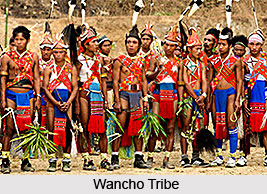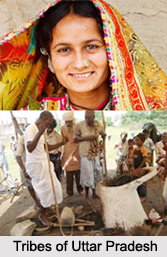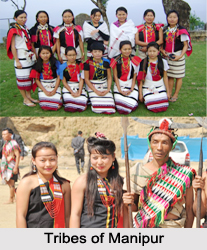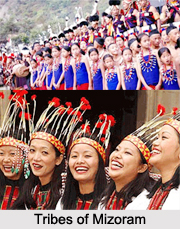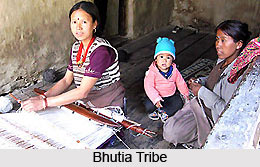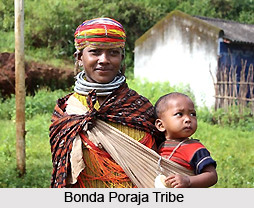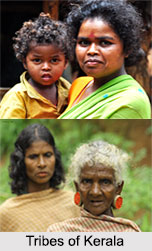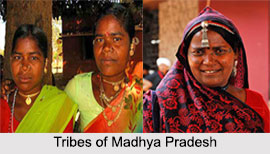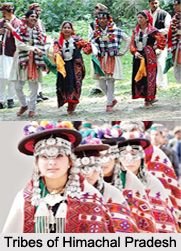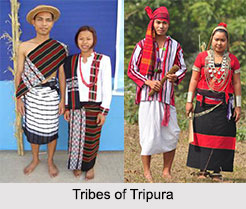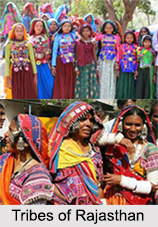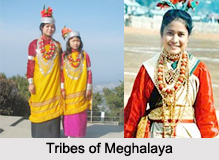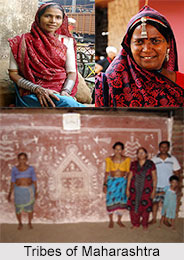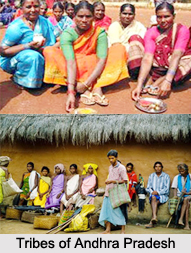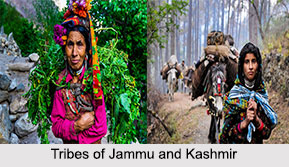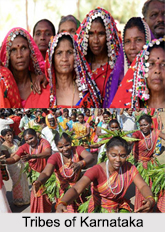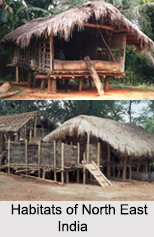 Habitats of North East India represent certain values which tell something about the lifestyle of the people of North East India which explain their acceptance and success. The inhabitants of North East India live in sections and sub-sections of a village where each settlement has a distinct morphology of their housing. Though urbanization has increased over the years, the usage of the indigenous housing structure is still very outstanding. The techniques of construction vary from tribe to tribe and even from sub-tribe to sub-tribe. These techniques are perfected over a long period of time and are made to suit the climatic, aesthetic, functional and sociological needs, keeping in mind the specific identity of the indigenous group.
Habitats of North East India represent certain values which tell something about the lifestyle of the people of North East India which explain their acceptance and success. The inhabitants of North East India live in sections and sub-sections of a village where each settlement has a distinct morphology of their housing. Though urbanization has increased over the years, the usage of the indigenous housing structure is still very outstanding. The techniques of construction vary from tribe to tribe and even from sub-tribe to sub-tribe. These techniques are perfected over a long period of time and are made to suit the climatic, aesthetic, functional and sociological needs, keeping in mind the specific identity of the indigenous group.
Factors of Habitats of North East India
Traditional houses and their construction were based on several factors ranging from socio-cultural, economic to physical factors. A closer study of the houses demonstrates that they are also constructed considering the delicate micro-climatic conditions and the possible natural calamities. The North-Eastern region of India, being prone to many types of natural calamities, uses building construction techniques which prove to be resilient to disasters.
The materials used to build these houses narrate volumes of the sustainable living as they generally are those which are found in nature, such as wood, bamboo, cane, reed, thatch, mud, etc. Some examples of houses constructed with the above mentioned materials are the "Chang Ghar" of the Apatanis of Arunachal Pradesh, the "Ikra" house and the "Chong" houses found in Assam, the "Nokmong" and the bachelor"s house called "Nokpante" of the Garos of Meghalaya and the bachelor"s quarters known as the "Zawlbuk" of the Mizos. Unfortunately these houses are becoming extinct with the advancement in technology.
Features of Habitats of North East India
A research into the housing patterns of this region unveils that;
There is simplicity in the structure and appearance of the houses
The materials used in the construction of the houses are generally derived from nature and are forest based such as bamboo, wood, leaves of trees, mud, grass and straw
The roofs are generally tilted to allow a free flow of rain since the region is subjected to heavy monsoon rainfall for a great part of the year
Houses are usually built on hill tops or on mountain slopes except for those in the plains of Assam, Manipur and Tripura.
